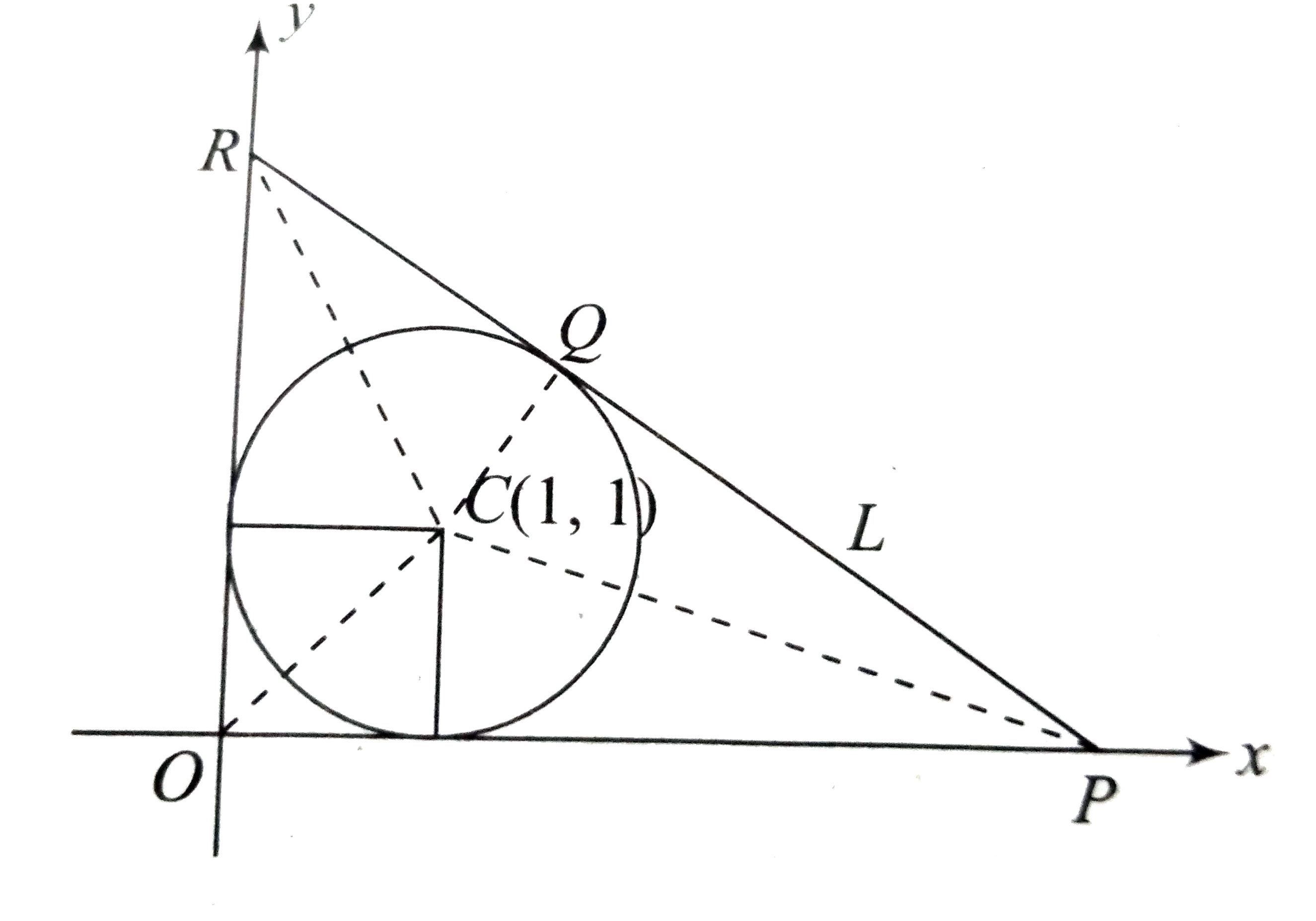If z≠1 and z2z−1 is real, then the point represented by the complex number z lies (1) either on the real axis or on a circle passing through the origin (2) on a circle with centre at the origin (3) either on the real axis or on a circle not passing through the origin (4) on the imaginary axisSolution in Bengali
either on the real axis or on a circle passing thorugh the origin.
on a circle with centre at the origin.
either on the real axis or an a circle not possing through the origin .
on the imaginary axis .
The correct Answer is:A
z2z−1 is purely real lt
∴z2z−1=¯z2¯z−1
⇒z¯zz−z2=z¯z¯¯¯¯¯−¯z−2
⇒(z−¯z)(|z|2−(z+¯z))=0
Either z=¯z
⇒ z lies on real axis.
or |z|2=z+z
⇒z¯z−z−¯z=0
⇒x2+y2−2x=0
Which represents a cricle passing throught origin.
Topper's Solved these Questions
- COMPLEX NUMBERSBook:CENGAGE PUBLICATIONChapter:COMPLEX NUMBERSExercise:MULTIPLE CORRECT ANSWER TYPE
Explore 6 Videos
- COMPLEX NUMBERSBook:CENGAGE PUBLICATIONChapter:COMPLEX NUMBERSExercise:NUMERICAL VALUE TYPES
Explore 33 Videos
- CIRCLESBook:CENGAGE PUBLICATIONChapter:CIRCLESExercise:Comprehension Type
Explore 8 Videos
- CONIC SECTIONSBook:CENGAGE PUBLICATIONChapter:CONIC SECTIONSExercise:All Questions
Explore 102 Videos
Similar Questions
Let z1 and z2 be two distinct complex numbers and z=(1−t)z1+tz2, for some real number t with 0<t<1 and i=√−1. If arg(w) denotes the principal argument of a non-zero compolex number w, then
View SolutionWrite the following in z=a+ib form: z=13−2i
View Solution
In the diagram as shown, a circle is drawn with centre C(1,1) and radius 1 and a line L. The line L is tangent to the circle at Q. Further L meets the y-axis at R and the x-axis at P in such a way that the angle OPQ equals θ where 0<θ<π2.
Coordinate of Q is
View SolutionGiven that A(1,1) and B(2,−3) are two points and D is a point on AB produced such that AD=3AB. Find the coordinates of D.
View SolutionIf |z^(2)-1|=|z|^(2)+1, then z lies on (a) a circle (b) the imaginary axis (c) the real axis (d) an ellipse
View SolutionIf |z^(2)-1|=|z|^(2)+1, then z lies on (a) a circle (b) the imaginary axis (c) the real axis (d) an ellipse
View SolutionIf |z^(2)-1|=|z|^(2)+1, then z lies on (a) a circle (b) the imaginary axis (c) the real axis (d) an ellipse
View SolutionIf |z^(2)-1|=|z|^(2)+1, then z lies on (a) a circle (b) the imaginary axis (c) the real axis (d) an ellipse
View SolutionIf z≠1 and z2z−1 is real, then the point represented by the complex number z lies (1) either on the real axis or on a circle passing through the origin (2) on a circle with centre at the origin (3) either on the real axis or on a circle not passing through the origin (4) on the imaginary axis
View SolutionIf the real part of z+2z−1 is 4, then show that the locus of he point representing z in the complex plane is a circle.
View SolutionIf 1z^(2)-1|=|z|^(2)+1, then z lies on (1)An ellipse (3)A circle 89.(2) The imaginary axis (4) The real axis
View SolutionShow that the equation of a circle passings through the origin and having intercepts a and b on real and imaginary axis, respectively, on the argand plane is Re(z−az−ib)=0
View SolutionIf z is a non-real complex number lying on the circle |z|=1, then z=
View SolutionEquation of the circle with centre on the y-axis and passing through the origin and (2, 3) is
View SolutionIf ∣∣z2−1∣∣=|z|2+1, then z lies on (a) The Real axis (b)The imaginary axis (c)A circle (d)An ellipse
View SolutionShow that the equation of a circle passings through the origin and having intercepts a and b on real and imaginary axis, respectively, on the argand plane is Re(z−az−ib)=0
View Solution

